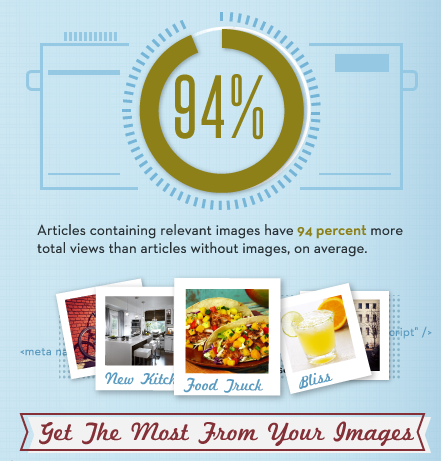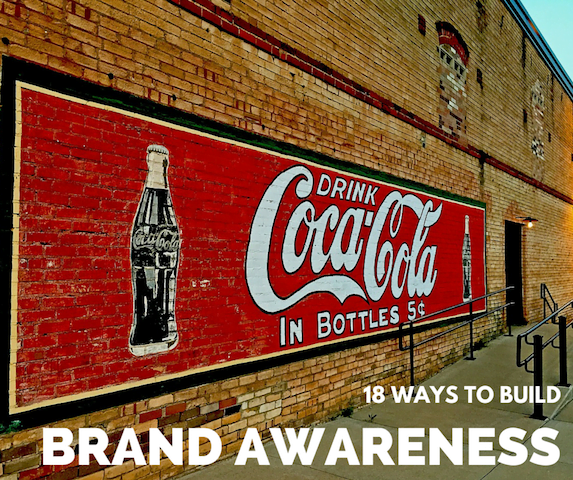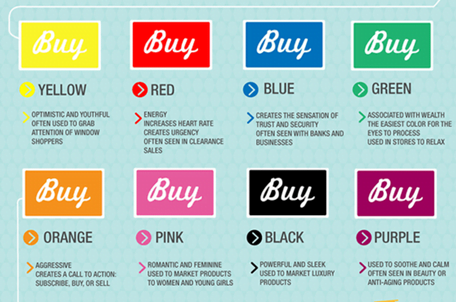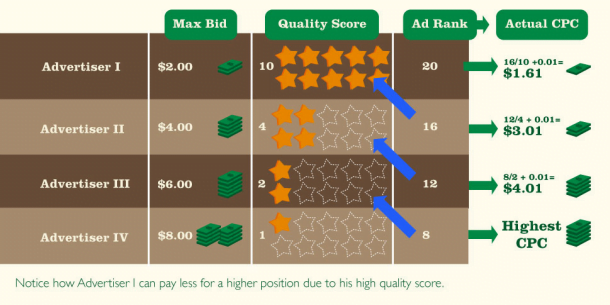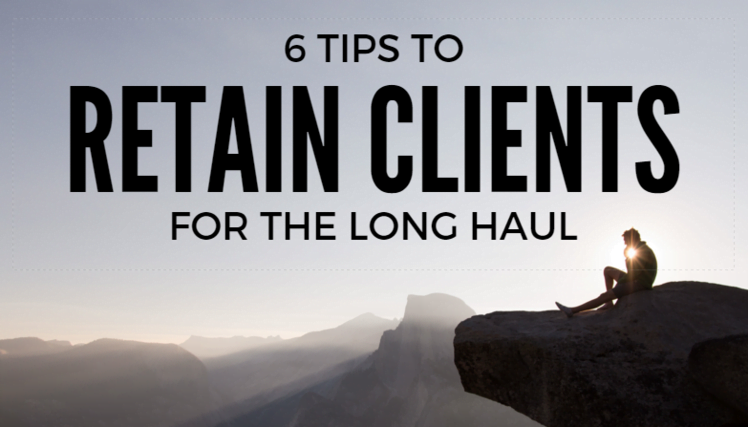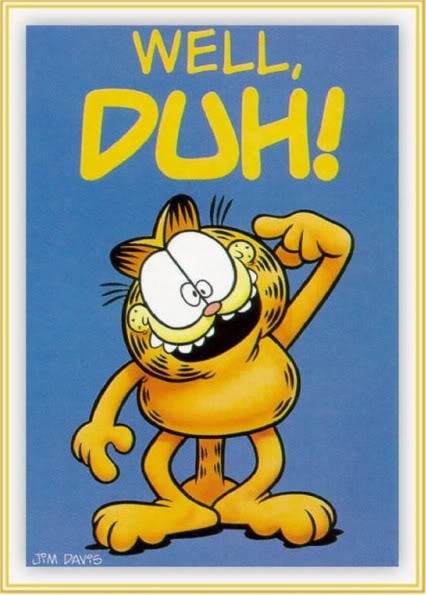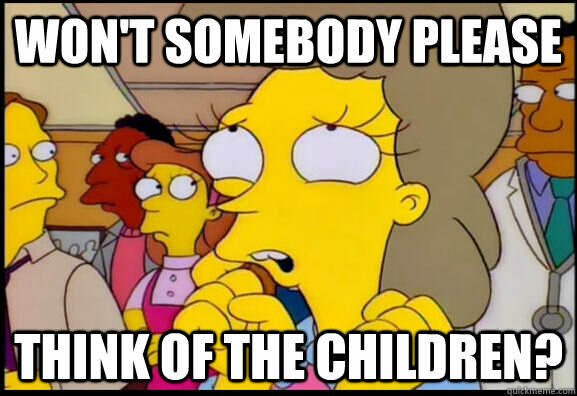
Hey guys, you know you should be using images in your content marketing, right? RIGHT?
Apparently, you don’t! I see blog posts every week that have exactly zero images. It shocks me that anyone would publish a blog post without a single image, but this tragedy happens every day. *sob*
Why You Need Images in Your Content Marketing
If you’re not already using images in all your content, here’s why you need to:
- Content with images is more sharable, and those shares are more re-sharable if they include images from your content (Facebook posts with images get 87% more engagement, and tweets with images get 18% more clicks, 89% more favorites and 150% more retweets)
- Images give your content personality – they’re an opportunity to strengthen your brand “voice” (images don’t talk, but you know what I mean)
- Images help break up the text, making it easier to scan (people love long-form content, but they might not want to read every word!)
Well-optimized images are an underutilized, yet highly effective, benefit of content marketing, and even if you ARE already including images in all your content, you could still probably do it more effectively. Below are five quick tips for optimizing content marketing images so you get better engagement and better results.
Tip #1: Include an image every 100 words or so
Your content needs more images than you think – Buzzsumo found that posts with an image every 75-100 words got the most shares across platforms:
Sorry this image is lacking in axis labels, but the X axis is word count between images, and the Y axis is number of shares
That means a 1000-word article needs about 10 images. If you don’t want to count words, here are a few rules of thumb:
- Use an image at the top of the post – either before the text or after the first sentence/paragraph. This is a great place for your feature image that people can use when they share the post on social media.
- Try to include an image between every couple of paragraphs unless your paragraphs are super short.
- Include an image in every section if you’re breaking up sections with subheads (which you should). A section with no images looks boring, unimportant, and skippable. (Your reader thinks: Why would I read this section when it didn’t even merit an image?!)
Tip #2:Choose colorful images
In our experience, tweets with bright, colorful, saturated images get tons more engagement. Put this same color power to work in your content marketing.
Here are a few examples of strong use of color in our own content marketing images:
If you want to take this “to the next level,” incorporate your brand colors in your images where possible. Moz is a good example of a blog that uses consistent color schemes (as well as a house font) across many of their images to strengthen branding (example below is from this post).
Tip #3: Use a mixture of fun and informative images
Readers love graphs, charts, all forms of data porn. Whenever you can, include data visualizations in your content marketing.
Ideally, you create your own data (we call this “making the news”), then make it visual:
- If you have a designer on staff or the budget to outsource, you can turn data into sexy infographics (like these ones our partner specialist Behak Wheeler created)
- If not, just use Excel! It’s better than nothing
- Be sure to slap your logo on the image so you get the brand exposure if people re-use it
Got nothing in the way of data to leverage? Check out these seven great sources for marketing data you can quote to strengthen the force of your content.
But don’t stop there! Our best-performing content uses a mixture of informative, data-rich images (like the one above) and images that serve more for entertainment value (funny images, inspiring images, etc.). Strive for a balanced mix of both.
Tip #4: Don’t go for the obvious stock image
Wow, am I ever tired of seeing images like this in martech posts.
A PERSON HOLDING A PHONE. HOW CREATIVE. Oddly, this comes from a company called “Death to the Stock Photo.” You’d think a business with that name would provide less stock-photo-y stock photos, no?
Look, I don’t care if your post is about mobile marketing, I promise you, you can do better than a person looking at a mobile phone. Instead, choose an image that conveys an emotion.
For example, here’s the first image in a post about easy PPC marketing wins:
Instead of having an obvious connection to PPC (Like a picture of an ad? Boorrring!), it plays off the emotions associated with the word “easy.” Silly, fun, a monkey could do it. Much more memorable.
Here’s another one, from a post about client retention for agencies. The obvious choice would be a stock photo of people working in an office or something like that. This one, instead, plays off the “long haul” in the title, conveying the emotion of getting to the end of a long journey. We made it! Natural high! Man, are my arms tired!
(Shout-out to my girl Erin Sagin, who created both of these images.)
Tip #5: Keyword-optimize your images
You didn’t think I was going to get through a whole post without mentioning SEO, did you?
Optimizing your images for search is NOT optional. Basically, there are only so many on-page levers you can pull to help your content rank, and images are one of them. Don’t ignore this!!! Here’s how to do it:
- Use the keyword you are targeting (and variations on the keyword) in your image file names. So, for example, if you’re targeting “mattress pads” as a keyword, your images should have file names like “mattress-pads.jpg,” “best-mattress-pads.png,” “how-to-choose-a-mattress-pad.gif” etc.
- Do the same thing with the alt text field for your content marketing images. Both file names and alt text should be descriptive of the image if possible, but if you’ve got a goofy picture that you’re just including for LOLZ, you should still try to use keyword terms in the file name. Don’t take this to the level of keyword stuffing (e.g. “mattress-pads-mattress-pad-all-about-mattress-pads-i-freaking-love-mattress-pads-did-i-mention-mattress-pads.jpg”), just be reasonable.
Extra credit if your content images load fast and are mobile-responsive (i.e., they automatically resize based on the size of the screen/device).
This simple step helps your content rank for your keywords – not just in image search, but regular search too. Just do it!
In closing…
Remember, strong use of imagery isn’t just about looking good – it improves content marketing performance across the board.

